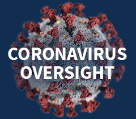Looking Ahead:
What’s Next?
Even after a vaccine candidate’s development, initial manufacturing, and authorization or licensure, the work is far from done.

What can we learn from H1N1?1
The 2009 H1N1 influenza pandemic tested the nation’s ability to distribute and administer a vaccine to millions of Americans and can provide important lessons for implementing COVID-19 vaccines and communicating to the public about these efforts.
Lessons learned from the H1N1 vaccine campaign cover a wide range of areas, including:
(1) identifying and prioritizing certain groups to receive the vaccine when vaccine availability is limited, (2) distributing and administering available vaccines, and (3) communicating these efforts and the benefits of vaccination to the public.For instance, we found that effective communication about the availability of vaccines was important for managing public expectations during H1N1. Similarly, managing public expectations as COVID-19 vaccine implementation begins is critical as initial availability of the vaccine is limited.
What are the implications for COVID-19?2
The table below provides examples of lessons learned from the H1N1 influenza pandemic and implications for COVID-19 vaccine implementation and communication to the public, based on our past work examining the H1N1 pandemic, as well as on our review of reports from the federal government and state and territorial health officials on the H1N1 pandemic and on CDC’s interim playbook for COVID-19 vaccination and other information.
Selected Lessons Learned from the Federal Response to the 2009 H1N1 Influenza Pandemic, Related to Vaccine Prioritization, Distribution, Administration, and Communication
| Lesson Learned | Experience during H1N1 pandemic | Implications for implementing COVID-19 Vaccine |
|---|---|---|
| Prioritization | ||
| Differences in how local jurisdictions prioritized groups for vaccination caused confusion | State and local jurisdictions were given flexibility to refine priority groups for H1N1 vaccine to meet local needs. Jurisdictions appreciated this flexibility, but differences in priority groups between neighboring jurisdictions led to confusion or the appearance of inequity. | Because initial supplies of any COVID-19 vaccine were expected to be limited, the Centers for Disease Control and Prevention (CDC) and Operation Warp Speed instructed jurisdictions to plan for the need to further refine any CDC recommended priority groups, which could again result in public confusion if neighboring jurisdictions identify differing priority groups. |
| Distribution | ||
| Using a centralized distributor was generally cited as an effective practice | The CDC used a centralized distribution process to distribute H1N1 vaccine to states. Built off CDC’s existing Vaccines for Children program, the distribution process proved to be scalable to also serve adults and used procedures and systems already familiar to many providers.a | For most COVID-19 vaccines, the Department of Health and Human Services (HHS) and Department of Defense (DOD) will use the same central distributor used during the H1N1 pandemic and build off of the CDC Vaccines for Children program. However, one vaccine (Pfizer) requiring ultra-cold storage is being shipped directly from the manufacturer to the vaccination provider site. |
| Minimum dose requirement for vaccine orders was problematic | CDC’s central distributor required minimum shipments of 100 doses of H1N1 vaccine, which were less suitable for vaccine providers administering vaccine to smaller populations. States had to break down the shipments into smaller increments, which was reported to have required significant staff time, caused storage and handling issues, and delayed when providers received vaccine. | HHS and DOD have determined that the minimum order size for centrally distributed COVID-19 vaccines is 100 doses, and the minimum order size for ultra-cold vaccine distributed from the manufacturer is 975 doses. This could again pose similar or even greater challenges getting vaccine to providers administering vaccine to smaller populations. States have asked for additional guidance on how to redistribute ultra-cold vaccine and officials representing immunization managers said redistributing ultra-cold vaccine will be a challenge for states. |
| Administration | ||
| State and local health departments had success expanding the pool of vaccine administrators | To achieve higher vaccine uptake, state and local jurisdictions used alternative vaccination clinic structures, such as drive-through clinics and retail pharmacies to administer H1N1 vaccine. | HHS and CDC have partnered with large retail pharmacies to administer COVID-19 vaccine in long-term care facilities and to the general public as larger supplies of vaccine becomes available. Participating jurisdictions are expected to have visibility on vaccine supply and uptake data by pharmacies within their respective areas. |
| Challenges with data collection limited available information on doses administered | Due to variations in states’ immunization tracking systems and capabilities, limited information was available nationally on the number of H1N1 vaccine doses administered. And because requiring data entry into immunization registries can decrease provider participation, states weighed the importance of vaccinating populations against tracking vaccine administration. In the end, according to a state immunization official, just one-quarter of states required patient-level reporting on H1N1 vaccine administration to state registries. | CDC has obtained Data Use Agreements from all 64 participating jurisdictions, according to the agency. CDC is requiring providers participating in COVID-19 vaccination efforts to report within 72 hours of administration on specific data elements, such as the vaccination site, which vaccine was administered, and information about the person receiving the vaccine. These data will be incorporated into an IT infrastructure that will support CDC analysis, information sharing between jurisdictions, and access to vaccine administration data. State and local health officials have raised concerns about the risks of introducing new data systems and requirements that have yet to be tested to track vaccine distribution and administration. |
| Multiple vaccine formulations complicated vaccine administration | Vaccine administrators had to work with multiple formulations of the H1N1 vaccine that arrived at different times and had different age and risk-group indications. For example, the first formulation to become available was not appropriate for use in several priority populations. This resulted in confusion and challenges in planning a mass vaccination program. | The multiple vaccines under development and available under Emergency Use Authorizations (EUA) for COVID-19 present additional challenges that were not encountered with H1N1 vaccine. COVID-19 vaccines will likely employ different and, in some cases, new technologies that have never been used in a vaccine licensed by the Food and Drug Administration (FDA). In addition to using different technology, the storage and handling requirements for COVID-19 vaccines differ, with some requiring ultra-cold storage that many providers do not have according to two provider groups. Further, unlike the H1N1 vaccine that required a single dose, the two COVID-19 vaccines available under EUAs require two doses, separated by either 21 or 28 days, and FDA may authorize or license different COVID-19 vaccines for different ages and risk groups. |
| Communication | ||
| Effective communication on the availability of vaccine was important for managing public expectations | HHS had conveyed that a robust H1N1 vaccine supply—about 120 to 160 million doses—was expected to be available in October 2009, but ultimately only about 23 million doses were allocated and fewer than 17 million doses were distributed to states by the end of that month. When vaccine availability was less than anticipated, state and local health departments had to cancel planned and publicized mass vaccination clinics and the credibility of government was diminished. | Delivery of Pfizer and Moderna vaccine doses began in December 2020. The stated goal of HHS and DOD’s Operation Warp Speed partnership is to ultimately deliver 300 million doses of safe and effective COVID-19 vaccines, with initial doses available by January 2021. HHS and DOD have noted that initial vaccine availability has been limited and anticipate broadening vaccination campaigns as more COVID-19 vaccine becomes available. However, during 2020, federal officials reported differing dates and estimates for when and how much vaccine was estimated to be available. |
| Effective communication approaches were needed to reach certain communities of color | During the H1N1 pandemic, certain racial and ethnic groups had lower vaccination rates, experienced delays in seeking vaccination, and had disproportionately higher percentages of hospitalizations and deaths compared with other populations. Some state officials observed that more proactive and focused federal vaccine messaging was needed for these groups. State and local health officials also said they wanted CDC to provide more communication materials for non-English speakers, with some state officials noting that it would be more efficient for CDC to provide the translation than having each state spending resources to translate the materials individually. | COVID-19 has affected racial and ethnic minorities disproportionately, and in one survey, a smaller proportion of African Americans have said they would be willing to get vaccinated compared with other groups.b CDC officials reported that the agency has developed communication resources for the general public, health care providers, health systems, and jurisdictions. |
Source: GAO analysis of reports on the 2009 H1N1 pandemic from GAO; the Association of State and Territorial Health Officials; HHS; the Institute of Medicine of the National Academies; and other HHS and DOD documentation, including the COVID-19 Vaccination Program Interim Playbook for Jurisdiction Operations, Version 2.0; and information from HHS and DOD officials. | GAO-21-26
a. The Vaccines for Children program is a federally funded program that provides vaccines at no cost to children who might not otherwise be vaccinated because of their families’ inability to pay. The program, administered by CDC, distributes pediatric vaccines to states and health care providers.
b. Kaiser Family Foundation, “Race, Health, and COVID-19: The Views and Experiences of Black Americans – Key Findings from the KFF/Undefeated Survey on Race and Health” (Washington, D.C.: October 2020), accessed on Nov. 25, 2020, http://files.kff.org/attachment/Report-Race-Health-and-COVID-19-The-Views-and-Experiences-of-Black-Americans.pdf




